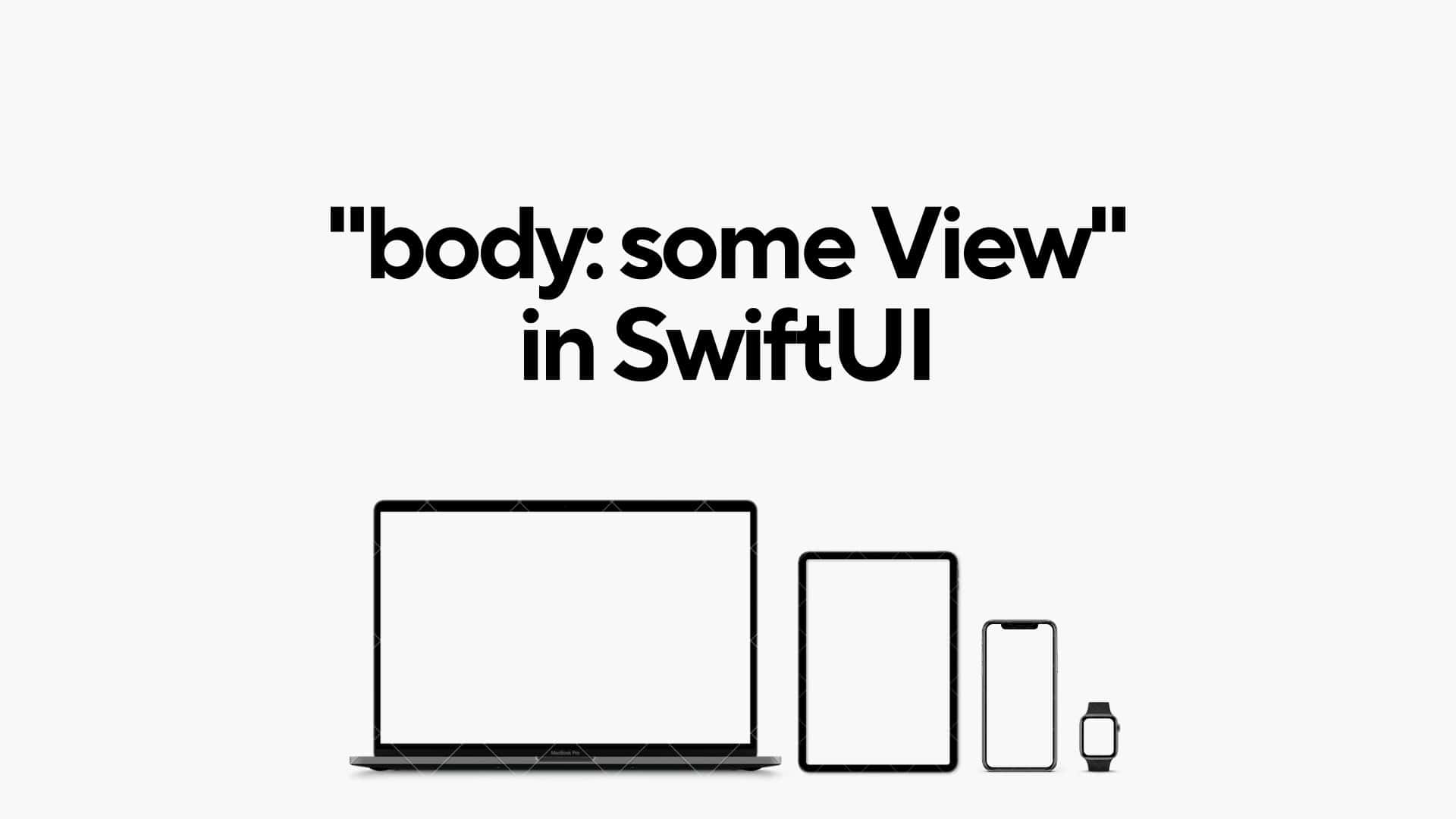How does "body: some View" work in SwiftUI?

In SwiftUI, the body: some View syntax is a key part of defining custom views. This syntax leverages the concept of opaque return types introduced in Swift 5.1, which allows the function to specify that it returns some type that conforms to the View protocol, without specifying the exact type.
Abstraction and Encapsulation
By using some View, SwiftUI abstracts away the specific types of views being returned. This abstraction allows developers to change the internal implementation of a view without affecting its public interface. For example, you can modify the structure of the views within the body property without needing to change the function's or property's return type.
Understanding body: some View
The body property in a SwiftUI view defines the view’s content and layout. When you declare body as some View, you're essentially telling SwiftUI that the body will return a view that conforms to the View protocol, but you're not revealing the specific type of the view. This provides both flexibility and type safety.
Here’s a step-by-step breakdown of how it works:
- Opaque Return Type: The
some Viewkeyword specifies an opaque return type. This means that while the specific type returned bybodyis hidden, the type must conform to theViewprotocol. - Type Inference: SwiftUI uses type inference to determine the specific type returned by the
bodyproperty at compile time. This allows Swift to optimize the rendering and updates of the view. - View Composition: SwiftUI views are typically composed of other views. The
bodyproperty allows you to build complex UIs by combining simple views. Even though the concrete type is hidden, SwiftUI can still understand and manage the view hierarchy.
Example of body: some View
Here's a basic example of a custom SwiftUI view using body: some View:
struct ContentView: View {
var body: some View {
VStack {
Text("Hello, World!")
.font(.largeTitle)
.padding()
Button(action: {
print("Button tapped!")
}) {
Text("Tap me")
}
.padding()
}
}
}In this example:
ContentViewconforms to theViewprotocol.- The
bodyproperty is defined with the typesome View. - The
bodyproperty returns aVStackcontaining aTextview and aButtonview.
SwiftUI infers that the body property returns a VStack containing the specified child views, which all conform to the View protocol.
Why Use some View?
Using some View in SwiftUI offers several benefits:
- Abstraction and Encapsulation: It abstracts away the specific types of views, allowing for changes in implementation without affecting the rest of the code.
- Performance: It enables SwiftUI to perform optimizations based on the concrete types determined at compile time.
- Simplified Syntax: It simplifies the syntax for defining views, making code more readable and maintainable.
Constraints and Considerations
- Single Type: A function or property using
some Viewmust return a single, consistent type. You cannot usesome Viewto return different types conditionally. If you need to return different views, you should use conditional views or type erasure withAnyView.
struct ContentView: View {
var condition: Bool
var body: some View {
if condition {
return AnyView(Text("Condition is true"))
} else {
return AnyView(Text("Condition is false"))
}
}
}- Compile-Time Inference: The concrete type must be inferable at compile time. This means that the structure of your view hierarchy must be fully known when the code is compiled.
Conclusion
The body: some View syntax in SwiftUI is a powerful feature that allows developers to create complex and flexible user interfaces while keeping type safety and performance optimizations. By leveraging opaque return types, SwiftUI abstracts away the concrete types of views, making the code more modular and maintainable. Understanding how body: some View works is essential for developing effective and efficient SwiftUI applications.